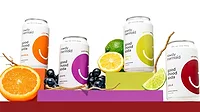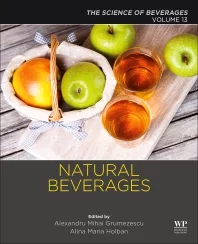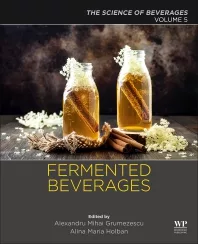R&D Feature
Consumers prefer performance beverages with qualities beyond hydration
Beverage-makers deliver convenient, functional performance drinks

Image courtesy of Cargill
In the Nintendo game Mario Kart, players have the opportunity to obtain items to use as power-ups. The various power-ups each have different uses to help the player get ahead in the race. Items such as the banana can throw off opponents, whereas items like the mushrooms give the user speed to gain a better standing in the race, aiding the user’s performance in the race.
Similarly, in the real world, consumers seek out performance beverages for a variety of benefits.
Thom King, CEO and chief food scientist at Portland, Ore.-based Icon Foods, explains how health and wellness trends are impacting the performance beverage market.
“Aside from sugar reduction, performance brands are capitalizing on clean label, non-GMO ingredients,” he says. “More and more beverages are offering sports and recovery drinks with adaptogenic compounds and electrolytes for recovery and mental acuity.”
King notes that the with gut health category “picking up stunning velocity,” many new performance drinks are combining prebiotic, probiotic and collagen protein.
Dr. Janice Johnson, food technical advisor at Cargill, Wayzata, Minn., says that beverage-makers are working toward drinks that sustain hydration. While electrolytes are key, she states that brands also are adding in antioxidants and vitamins.
“Consumers are getting savvy that different salts might increase their hydration or cellular transport — ideas that were not mainstream or in consumer lingo a few years back,” she explains. “The electrolyte source can also add to consumer perception in other ways. For example, both sea salt and pink Himalayan salt appeal to label-conscious consumers, as they are perceived to have more positive attributes than traditional salt.”
Carla Saunders, senior marketing manager for high-intensity sweeteners at Cargill, notes that sugar reduction is “another big nutritional play,” and consumers often look to avoid sugar or opt for sugar-reduction.
“As consumers look for more from their beverage choices, brands are adding functional ingredients to their formulations,” she says. “Across the category, we’re seeing ingredients like vitamins, biotics, energy-supportive compounds and electrolytes make their way into formulas.”
Saunders goes on to mention that factors such as convenience, drinkability and protein content are key drivers of the performance beverage market. Ingredient transparency and sustainability have also become important to consumers, she notes.
“There’s plenty of pressure for brands — regardless of their product category — to deliver products that consumers view not just as good for them, but also good for the planet,” Saunders says. “In today’s marketplace, sustainability matters, as does ethical sourcing practices. That’s one of the reasons Cargill turned to fermentation to produce our EverSweet stevia sweetener.”
Niki Kennedy, director of insights and content at Chicago-based Glanbia Nutritionals, also points to health and wellness as factors that have had the greatest influence on the performance beverage market. Not only must beverage-makers deliver on refreshment, she states, but they must also deliver health benefits.
“Furthermore, brands are increasingly tailoring their formulations to cater to different age groups and their specific health performance needs,” Kennedy says. “Additionally, there’s a growing interest in alternative beverage formats, such as ready-to-drink (RTD) protein shakes, energy shots and ready-to-mix powders to provide consumers with convenient and diverse options.”
Aside from consumer interest in health and wellness, Kennedy adds that trends in plant-based and vegan diets have affected the performance beverage market.
“Consumers are increasingly recognizing the benefits of various types of mushrooms, which have been shown to stimulate the immune system, provide antioxidants and support overall wellness,” she says. “As a result, there is a noticeable variety of mushroom-based products in RTD or ready-to-mix beverages. In addition to this, unique and exotic flavor profiles are gaining popularity in the performance beverage market as consumers seek novel taste experiences.”
Kennedy notes that consumers are becoming increasingly aware of product labeling and transparency, especially when it comes to ingredient lists and nutritional information.
Philip Caputo, marketing and consumer insights manager at Brooklyn, N.Y.-based Virginia Dare, echoes similar sentiments, highlighting the impact numerous trends are having on the performance beverage market.
For instance, today’s consumers are centered on mindfulness, and that carries over to performance beverages, he says.
“Consumers are more mindful than ever about what they’re putting in their bodies,” he says. “They’re looking for products that not only deliver the benefits promised on the label, but are holistically a good choice.”
Caputo also notes that consumer preference has leaned toward trends in the area of alternative, low- and zero-sugar, as well as plant-based vegetarian and vegan options.
The market for performance beverages also is seeing broadening of consumer appeal. Kyle Krause, product manager for functional fibers and carbohydrates at BENEO, Parsippany, N.J., explains how performance beverages were once just the choice of extreme athletes. But today, consumers can be categorized into two groups: athletes and a regular active group, he says.
“The common thread between these groups is the need to have an optimum energy supply to fuel their active lifestyles and deliver desired health benefits,” Krause explains. “This leads the beverage industry to create ready-to-drink and powder mix offerings with various ingredients to meet the different needs of such supportive consumers.”

Image courtesy of BENEO
Finding the right mix
As for which ingredients are best for supporting endurance and physical activity, Icon Foods’ King suggests that the most effective are sodium, potassium and magnesium.
“They regulate nerve and muscle function, hydrate the body, balance blood acidity and pressure, and help rebuild damaged tissue,” he explains.
Karen Todd, registered dietitian and vice president at New York-based Kyowa Hakko USA, sees increasing potential for the amino acid glutathione in future formulations. Its branded form, Setria, is becoming a more common ingredient in pre- and post-workout supplements, Todd explains.
Todd points to Cognizin Citicoline as “an ideal ingredient.”
“It offers stability and rapid solubility, eliminating issues related to degradation and clumping,” she explains. “Moreover, Cognizin has no taste or odor, addressing flavor and smell concerns. Its compatibility with beverage formulations and self-GRAS status for regulatory compliance further make it a practical choice.
“While some performance-supporting ingredients may post difficulties, Cognizin stands as an efficient and versatile solution for enhancing beverages without compromising quality or sensory experience,” Todd continues.
Rhitika Poudel, associate research manager at Glanbia, suggests that the following ingredients are helpful for endurance: creatine, adenosine triphosphate (ATP), ashwagandha, branch chain amino acids (BCAAs), beta alanine and caffeine.
“Creatine supplementation increases ATP production and has been linked to enhanced high-intensity exercise performance, particularly during short bursts of high intensity exercise performance, which may support endurance indirectly,” she says.
Poudel suggests that caffeine in low to moderate doses consumed 60 minutes before exercise appears to have the “most consistent positive outcomes on sports performance.”
For ingredients that support recovery, Poudel points to proteins, carbohydrates, BCAAs, electrolytes, creatine and glutamine as offering a range of benefits.
“Protein aids in muscle repair while carbohydrates replenish glycogen stores,” she explains. “Electrolytes prevent dehydration and maintain fluid balance. BCAAs and glutamine can reduce muscle soreness and promote muscle protein synthesis.”
Melissa Machen, principal technical account manager for protein ingredients at Cargill, says that protein has remained a large draw in the sports nutrition space. This is because consumers associate the nutrient with a variety of positives — from muscle-building to weight management, she notes.
“Many consumers are trying to hit specific grams of protein to manage their health, and performance beverages can help them reach their protein-intake goals,” Machen says. “Pea protein, in particular, is well-suited for sports nutrition applications.”
Cargill’s Johnson praises potassium as a recovery ingredient, because the electrolyte plays a role in hydration, muscle contraction and heart function.
Noting that the first step to endurance is to provide energy, Richard Stewart, project leader for technical service at Ingredion Inc., Westchester, Ill., points to BCAAs as a solution for recovery.
“BCAAs have been shown to increase muscle growth, reduce exercise fatigue and decrease muscle soreness,” he says. “Proteins and easily digestible energy sources, such as dextrose, are common in helping to support recovery.”

Image courtesy of Ingredion Inc.
Formulated for enjoyment
Yet, formulators know that having a functional beverage is a multi-dimensional task. Developing products that taste is good remains at the forefront.
Virginia Dare’s Caputo notes that consumers continue to prefer fruit-flavored sports powders and RTD sports drinks.
“We’re seeing an emphasis on indulgent flavors as a way for consumers to satisfy both the need for performance beverages and the desire for something that feels like a treat,” Caputo says of sports powders. “When you add interesting flavors like a Fluffernutter Crumble protein powder, you have a product that checks all the boxes: delicious, intriguing and functional.”
Another trend he’s noticed is nostalgia. He points to the pull of the “Barbie” movie and Taylor Swift’s Eras Tour.
“People love reminiscing, and for performance beverages, flavors can leverage that appeal,” Caputo explains. “Taste and smell are powerful ways to invoke memories, so revitalizing a childhood flavor is an instant way to gain attention.”
Regardless, Caputo says that flavors don’t necessarily need to be reimagined to be nostalgic.
“Performance beverages can get away with non-specific fantasy flavors as a nod to a popular show, movie or video game, like a Call of Duty or Pokémon collab,” he states.
As functional ingredients can create challenges in beverage formulations, experts also highlight how various solutions can overcome issues when utilizing such ingredients in performance beverages.
Virginia Dare’s Caputo notes that many functional ingredients carry bitter or medicinal off-notes. While BCAAs are popular for performance and recovery, they’re “extremely bitter,” he says.
“Thankfully, brands can overcome these formulation challenges and create their ideal flavor through taste modulation and flavor masking,” Caputo explains. “Taste modulation brings out the best flavor profiles while controlling sweetness, saltiness and umami. For very harsh functional ingredients, the process continues. Virginia Dare then draws on decades of flavor masking experience … This covers up any lingering off-notes.”
Icon Foods’ King says that post-workout and recovery drinks must taste good, but can be addressed through a variety of ways.
“[Off-notes] can be vanquished through masking with specific combinations of glycosides from monk fruit and stevia,” King says. “Additionally, flavor modulators like thaumatin (derived from the katemfe fruit) and Reb M steviol glycosides can shift palate perception through positive allosteric modulation, which can extend flavor, thus muting off-notes, instead of fully masking, which can mask your flavors as well.”
Ingredion’s Stewart explains that producers often increase perceived sweetness by adding off-note blockers. He notes that it’s important to know the solubility limits of the compounds.
“The viscosity of the formulations also needs to be considered for beverages that contain insoluble material,” Stewart says. “The proper use of hydrocolloids to support these products in solution is essential to create a desirable experience.”
BENEO’s Krause says Palatinose, a low hygroscopic free-flowing powder, is “ideal” for instant powdered beverages, as it minimizes issues like caking and lumping. The powder also does not absorb humidity, so convenient handling throughout its shelf life is guaranteed, he adds.
“Additionally, thanks to its strong molecular bonds, Palatinose has much higher acid and process stability than sucrose,” Krause says. “This is highly relevant for the production of isotonic sports drinks that tend to have a pH less than three. Studies have shown that beverages with Palantinose maintain a constant osmolality even under different environment conditions. This, in turn, helps maintain a stable ratio of solute particles in isotonic, hypo and hypertonic beverages.”
These steps are helping to ensure the future performance beverages align on function and flavor.
Looking for a reprint of this article?
From high-res PDFs to custom plaques, order your copy today!









